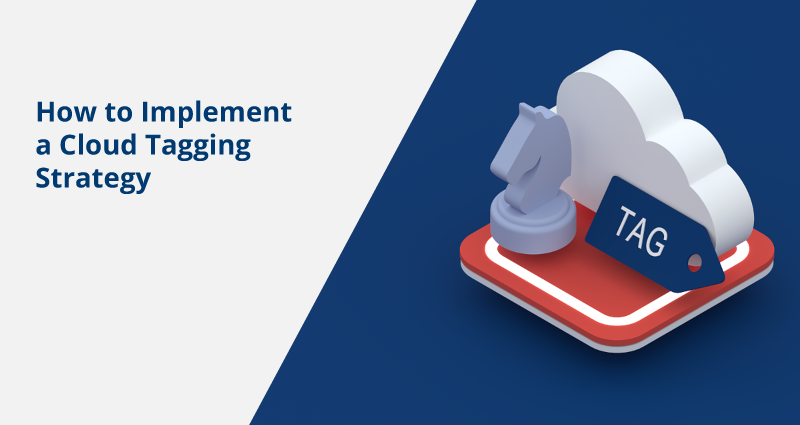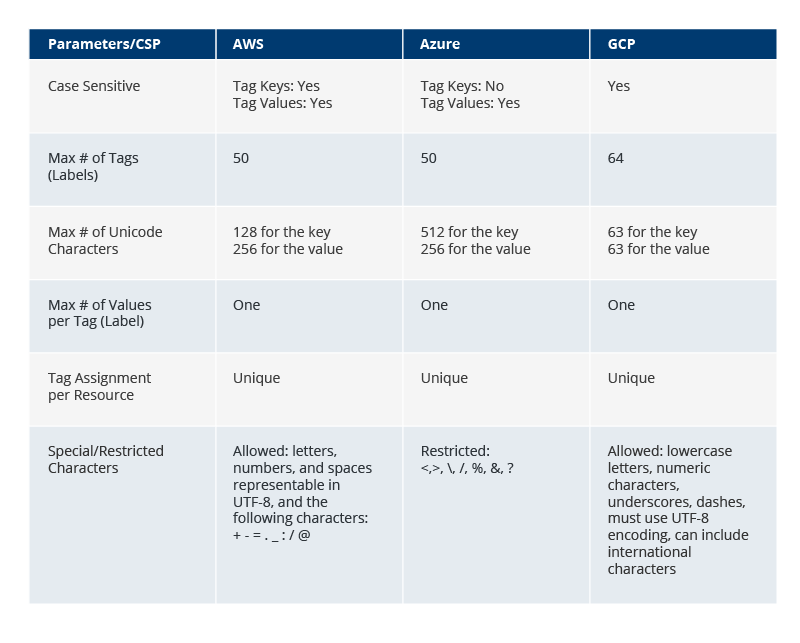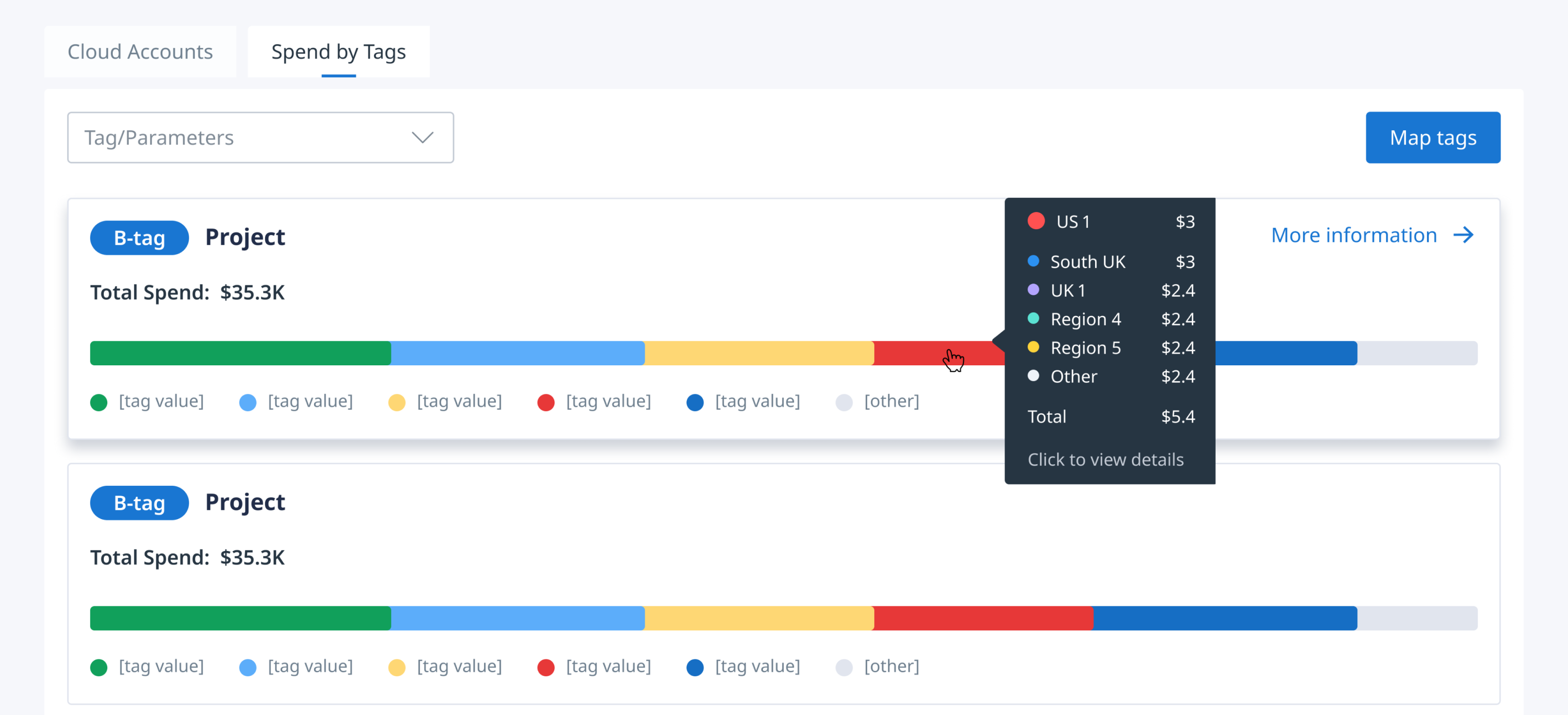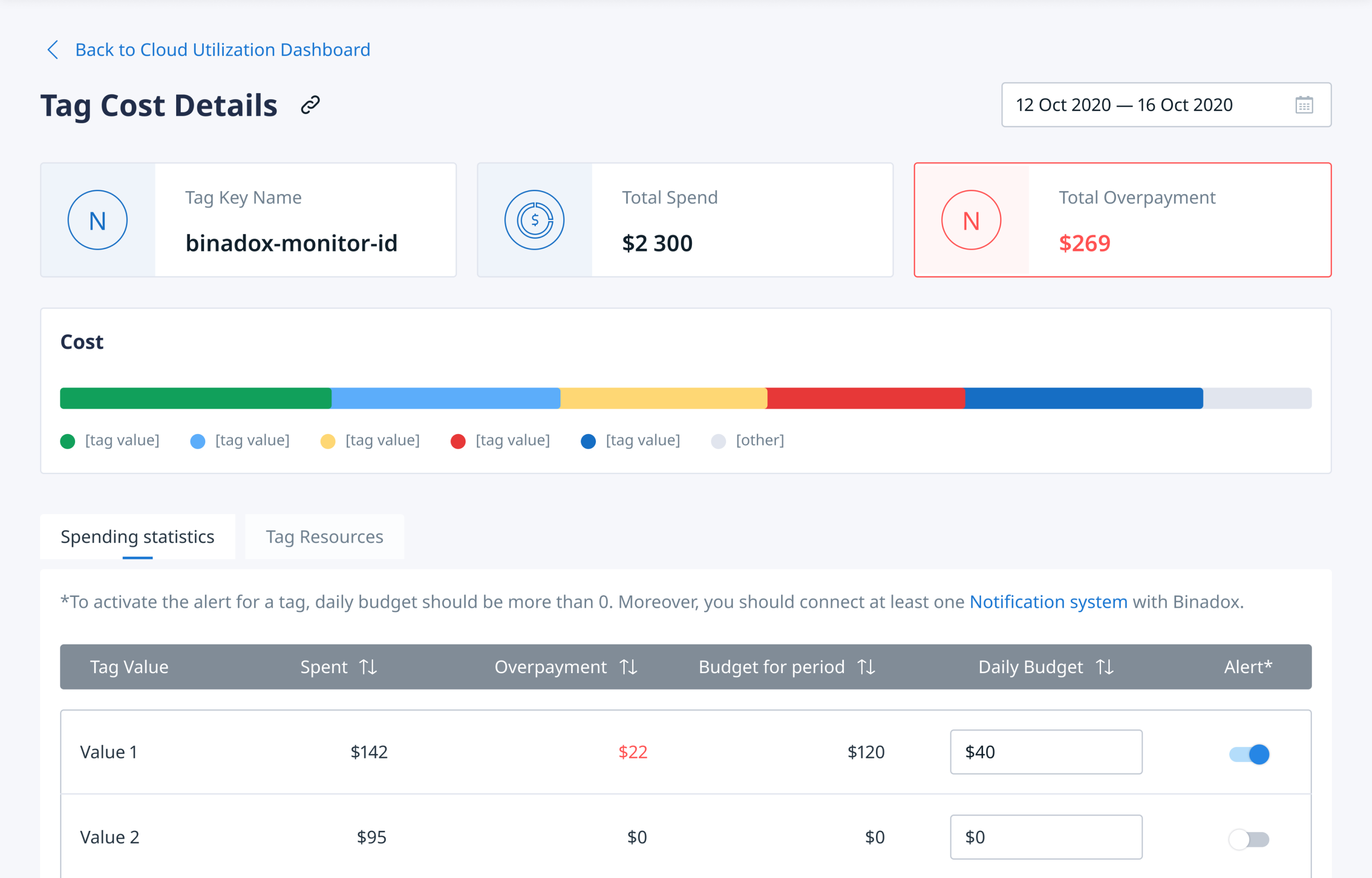How to Implement a Cloud Tagging Strategy

There are plenty of cost optimization practices in the cloud computing world and tagging is one of the most effective ones. There are a couple of reasons why.
First of all, tagging allows companies to organize, view, and manage multiple resources shared between different departments, projects, and business units.
Secondly, this cost-saving practice gives companies the opportunity to visualize either the total cloud resources spend across the organization or the cost of certain functions and services.
Finally, tagging allows companies to label and group cloud assets so that the creation of the cost reports and financial audit becomes much easier.
In this article, we gathered information on tagging best practices and tag management, as it may seem like a daunting and challenging task for many companies. Based on the recommendations given below, organizations can develop their own tagging strategy and simplify tagging processes across the company.
We will discuss the notion of tag, its types, reasons why organizations need them, how to implement a solid tag management strategy in the organization and how your company can make the most out of the tagging practice.
What is a cloud tag?
A tag is a label assigned to a cloud resource. Tags have two parts: a “key” and a “value” associated with that key. The key is the unique name you use to refer to the tag, which identifies some item of data, and the value is either the data that is identified or a pointer to the location of that data.
To make it clear, let’s consider the example. If you want to use the tagging feature to track the assets by project, the “key” would be “Project” and the “value” would be the specific project. So you would tag the one named “Sun” with (Key=Project, Value=Sun). You would then correlate information about which project deploys which assets by filtering your assets based on the tag metadata of the “Project” key.
Another example, imagine that you would want to track the resources and their costs by the stack, particularly the ones related to the production. In this case, the “key” would be Stack and the “value” would be Production (Key=Stack, Value=Production).

It’s worth mentioning that there are two different types of tags. The first kind of tag is the one created by AWS or Azure. They’re automatically generated and cannot be altered. Typically, they contain long strings of letters and numerals and look like this:

The other kind of tags are user-defined tags. In this article, we will primarily focus on them. These tags can be labeled in the way that a company prefers. For instance, a business owner may define a tag’s key as “region” and its value as “usa”.
Why tag cloud resources?
Companies implement public cloud tagging for many reasons but the most practical one is the willingness to reach greater visibility into cloud resources utilization rates and costs across the teams and departments. Without tags, organizations put themselves at the risk of ending up with huge cloud bills to pay.
Additionally, without having a proper tag management strategy, companies can make the following mistake – implement tags incorrectly, and, as a result, fail in cost reporting and optimization.
Reasons to use public cloud tags
1. Cost reporting
The majority of companies choose to tag their cloud resources mainly to allocate cloud costs. Thanks to solid tagging implemented in the organizations, business owners have a clear picture of cloud usage and costs.
As visibility facilitates cost reporting, companies can use a chargeback policy to identify the usage of cloud resources by all departments across the organization, assign the resources to the teams and projects, as well as easily reallocate resources as demand changes.
2. Access management
Defining access control through tags is a widespread practice. For instance, AWS Identity and Access Management policies give users the opportunity to limit access to test, production, or development environments by assigning the tags to those resources.
There are strict limitations on who gets access to creating, deleting, and modifying the tags that should be taken seriously to manage access control policies in your company. In order to limit unauthorized parties’ access to modifying the tags directly, you can apply the deny rules on ec2:CreateTags and ec2:DeleteTags actions.
3. Security management
In addition to access management, tagging makes security management easier. If your cloud resources contain sensitive information, they need to be managed with additional security. In this case, tags are a great way to identify these resources.
For example, environments that contain Personal Identifiable Information (PII) can be highlighted and managed with particular caution. Tracking such resources also makes it easier to detect violations in security policy. S3 buckets that are publicly accessible and shouldn’t be can serve as an example. As a result, enterprises invest an enormous amount of time and effort in keeping a check on each bucket’s policy while they could deal with the organizations’ business processes instead.
4. Automation
Automation in cloud computing can save business owners’ time and nerves, as it minimizes manual work and reduces the risk of human errors. Tagging can significantly facilitate the automation of cloud resources.
For example, you don’t want instances that are deployed by the HR department to work at night. In this case, you can search for these instances to shut them down for the non-working hours every single day, which can be devastating. Otherwise, you can tag these resources once (Key=Department, Value=HR) and search them by a tag group to perform the required action, instead of looking for every single instance separately again and again.
5. Resource grouping
By default, public cloud users can organize resources by services. Tagging gives administrators the opportunity to choose how resources should be organized in the company. The most common ways of resource grouping are uniting them by region, department, team, project, owner, stack, division, business unit, environment, and so on.
Apart from organizational function, cloud resource grouping serves as the tool that allows you to search globally and edit tags in bulk, all with just a few clicks.
Implement a cloud tag management strategy
We would like to highlight 5 steps that can help your company create and establish a strong strategy for governing the tags within your cloud architecture:
Step 1: Identify and discuss requirements
We recommend companies to start with those who will actually use tags – a cross-functional team of stakeholders. It’s worth mentioning that the team may include not only IT department members but also employees from finance, sales, marketing, or any other department deploying cloud resources.
It’s vital to hold a meeting, in order to hear out everyone’s opinion concerning tagging strategy and exclude miscommunication across teams.
Step 2: Keep the record of changes
Once the previous step is completed, make sure to document all matters discussed during the meeting: definitions of tags, how and in which cases they will be used, as well as the reasons why your company decided to implement certain tags.
These points should be clearly articulated, understood, and accepted by all the stakeholders, as this step is the essential part of the next one.
Step 3: Ensure consistency
Sooner or later, the company should determine the naming conventions for the tagging system. It’s recommended to choose a standardized naming approach for tags, and keep in mind restrictions like case sensitivity.
If capitalization and naming conventions are inconsistent across functions, companies can create duplicate tags and fail in viewing the accurate cost reports and statistical data. For instance, tags “CostCenter=42” and “costcenter=42” are perceived by the system as 2 different tags.
That’s why one more thing the companies should remember is that each cloud provider has a slightly different approach to tagging and has its own restrictions. For instance, in AWS, most resources are limited to no more than 50 tags each; while in GCP, the limit is 64 tags. Also, for each resource, each tag key must be unique and can only have one value.
There are some of the tagging parameters for cloud vendors as AWS, Azure, and GCP:

Although these limits exist and sometimes complicate the tagging process, they play a sufficient role, as they help organizations create a coordinated cloud tag system.
Step 4: Move gradually
As time goes, the structure of the public cloud tag system in the organization will develop, so that the tagging becomes the initial part of the majority of business processes. However, it’s recommended to start with creating and implementing a small set of tags that meet the company’s requirements in the short term.
Initially, focus on tags connected to cloud costs. These tags should match with internal reporting requirements, as it facilitates filtering the data according to the tags. This can help business owners or the members of the Financial department see cloud resources usage across functions and implement appropriate chargebacks.
Step 5: Prepare the ground for the future
Tag right from the start and tag regularly! Even if there are some resources that aren’t commonly used today, they could become an essential part of future plans and projects. The earlier you tag the resources, the easier it will be to keep track of them and handle managing processes.
However, the huge number of tags created in different places in different forms can be confusing. Fortunately, some cloud management platforms like Binadox help companies that deploy multi-cloud architecture to view all tags across several cloud providers and accounts in one place.

Binadox users can view the total spend, spend by a certain tag, as well as set the daily budget for tagged resources and send alerts when the threshold is reached. Also, users can view detailed info on these resources. It doesn’t only facilitate the reporting process but also allows companies better understand the cost trends, analyze them and make managerial decisions to optimize cloud spendings.

Moreover, Binadox users can group all the resources, regardless of the provider, in a more convenient way with the use of Binadox tags – B-tags. With B-tags it’s easier and faster to tag numerous objects located in different environments as there is no need to switch between accounts and vendor’s platforms.
Further recommendations
So, you’ve set up the required tags and developed a smart tag management strategy applied across the organization. What’s next?
Good tag management doesn’t end with the tags implementation. You can use platforms like Binadox to create and constantly monitor tags, but also it’s wise to think about what further action should be taken.
One of the essential parts of keeping your tag management working is the maintenance of the tagging policy in your company. There are some guidelines from us: